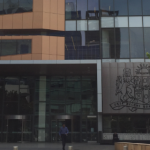Bail Applications in NSW: Showing Cause and the Unacceptable Risk Test

Much has been made recently by the mainstream media about the supposed ease by which those facing allegations of domestic violence offences are granted bail and released into the community.
But the fact of the matter is that New South Wales has one of the strictest bail regimes in the western world, with the presumption of innocence being thrown out the door and those against whom allegations are made often having to demonstrate why they should be released from custody pending the determination of the claims made against them, rather than the state having to show why they should be locked up behind bars.
And the situation is getting worse for defendants, with the New South Wales government drafting a bill that would raise the bail threshold for many accused of domestic violence and require those who are released on bail to wear monitoring devices.
So, what is bail? And what are the facts about the legal tests applied when determining whether an accused person should be released on bail.
What is bail?
Bail is the release of a person who is charged with a criminal offence from custody on the undertaking the person will attend court when required.
Bail conditions
Bail can come with a range of additional conditions, such as residing at a particular premises, depositing security, not associating with certain people, not attending a specified place and reporting to police at designated times.
Offences that come with a right to release
There is a right to release on bail for the following offences:
- Those that carry a fine only,
- Those being dealt with by way of young offender conferences, and
- Those contained in the Summary Offences Act 1988, except excluded offences such as obscene exposure where a person has previously been convicted of that offence, violent disorder or possession of a knife where a person has previously been convicted of a personal violence offence, custody or use of a laser pointer, or being a convicted child sexual offender caught loitering near premises frequented by children.
Show cause offences
At the other end of the spectrum, certain offences require a person to ‘show cause’ as to why their detention is not justified.
These are known as ‘show cause offences’ and include:
- Offences punishable by life in prison.
- Serious indictable offences that involve sexual intercourse or the infliction of actual bodily harm with intent to have sexual intercourse by an adult against a person under the age of 16.
A serious indictable offence is one which carries a maximum penalty of at least 5 years in prison.
- Serious personal violence offences or those involving wounding or grievous bodily harm where the person has previously been convicted of a serious personal violence offence.
A serious personal violence offence is one that falls under Part 3 of the Crimes Act 1900 (sections 17A to 93AC) that carries a maximum penalty of at least 14 years in prison, or a similar offence under legislation of the Commonwealth, or another state or territory, and includes manslaughter, intent to murder, supply of drugs causing death, intentionally or recklessly causing grievous bodily harm and sexual assault offences.
- Serious indictable offences under Part 3 or 3A of the Crimes Act 1900 or Firearms Act 1996 that involve a firearm, indictable offences that involve the unlawful possession of a pistol or prohibited firearm in a public place and serious indictable offences under the Firearms Act 1996 that involve acquiring, supplying, manufacturing or giving possession of a pistol or prohibited firearm, or a firearm part that relates solely to a prohibited firearm.
An indictable offence is one that can be committed to a higher court such as the District or Supreme court rather than finalised in the Local Court.
- Indictable offences under Part 3 or 3A of the Crimes Act 1900 or Firearms Act 1996 that involve the use of a military-style weapon, indictable offences that involve the unlawful possession of a military-style weapon or serious indictable offences under the Weapons Prohibition Act 1998 that involve buying, selling or manufacturing a military-style weapon, or selling prohibited weapons on 3 or more occasions.
- Offences under the Drug Misuse and Trafficking Act 1985 that involve cultivating, supplying, possessing, manufacturing or producing a commercial quantity of prohibited drug or plant.
- Offences under Part 9.1 of the Criminal Code Act 1995 that involve possessing, trafficking cultivating, selling, manufacturing, importing, exporting or supplying a commercial quantity of a serious drug.
- Serious indictable offences committed while on bail or parole.
- Indictable offences or the offence of failing to comply with a supervision order committed while under a supervised order, such as a conditional release order, community correction order or intensive correction order.
- Attempts to commit, or assisting, aiding, abetting, counselling, soliciting, being an accessory to, encouraging, inciting or conspiring to commit any of the foregoing serious indictable offences.
- Serious indictable offences committed while subject to an arrest warrant.
Courts have found that:
- An applicant’s situation does not have to be exceptional, special or unusual for cause to be shown, and
- A combination of factors can be taken together to meet the threshold.
Factors that may be considered when determining whether cause is shown include a person’s youth, mental or physical health issues, lack or prior custody, employment or business obligations, the requirement to care for others, and the weakness in the prosecution case.
If cause is not shown, the bail application must be refused.
If cause is shown, the process moves to the next stage of the process: the ‘unacceptable risk test’, which applies to all offences other than those for which there is a right to release on bail.
Unacceptable risk test
The unacceptable risk test stipulates that a person must be refused bail if there is an unacceptable risk that if released from custody, the person will:
- Fail to appear in court when required,
- Commit a serious offence,
- Endanger the safety of complainants, other individuals or the community, or
- Interfere with witnesses or evidence.
The matters relevant to determining whether a bail applicant represents an unacceptable risk are:
- The applicant’s background including criminal history, circumstances and community ties,
- The nature and seriousness of the alleged offence,
- The strength of the prosecution case,
- Whether the applicant has a history of violence,
- Whether the applicant has previously committed a serious offence while on bail,
- Whether the applicant has a history of compliance or non-compliance with bail acknowledgements or conditions, apprehended violence orders, parole orders, home detention orders, intensive correction orders, community correction orders, conditional release orders, non-association or place restriction orders or supervisions orders,
- Any warning issued to the applicant by police or another bail authority in circumstances where the applicant failed or was about to fail to comply with a bail acknowledgement or condition,
- Whether the applicant has criminal associations,
- The length of time the applicant would likely spend in custody if refused bail,
- The likelihood of a full-time custodial sentence if convicted of the offence, or where convicted but not yet sentenced, the likelihood of a full-time custodial sentence being imposed,
- Whether any appeal against conviction or sentence that is pending for the offence has reasonably arguable prospects of success,
- Any special vulnerability or needs of the applicant including due to youth, being Indigenous or having a cognitive or mental health impairment,
- The need to be free to prepare to obtain legal advice, prepare for court or for any other lawful reason,
- The applicant’s conduct towards any complainant or their family member after the alleged offence,
- The views of any complainant in a serious offence or their family member if relevant to the concern the applicant could endanger their safety or that of another individual or the community if released,
- Whether bail conditions could reasonably be imposed to address any bail concerns,
- Whether the applicant has associations with a terrorist organisation or any person or group advocating terrorism or violent extremism, or made statements or undertaken activities advocating support for terrorist acts or violent extremism.
Need a lawyer for a bail application?
If your loved-one has been charged with a serious criminal offence and requires expert legal advice and formidable courtroom representation by experienced, specialist criminal defence lawyers for a bail application in New South Wales, you can rest assured the defence team at Sydney Criminal Lawyers will fight to achieve the optimal outcome.
Our profession-leading specialist criminal defence lawyers have the up-to-date legal knowledge and specialist experience to maximise the prospects of achieving bail in difficult circumstances, frequently securing the release of clients in cases where other lawyers have advised that bail is unachievable.
So, call us anytime on (02) 9261 8881 to engage lawyers who will fight to protect the liberty and future of your loved-one.





